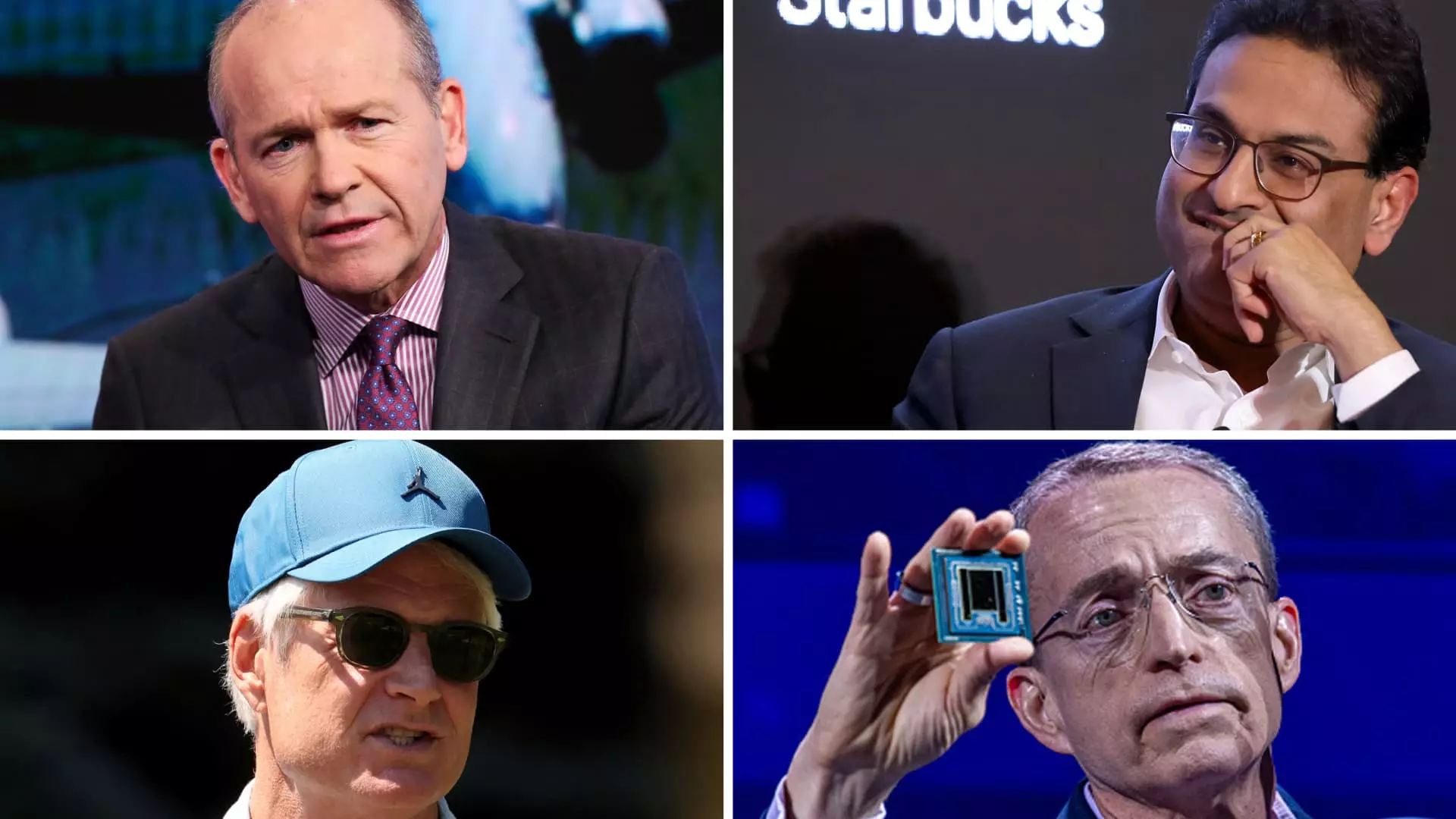The year 2023 has marked a critical turning point for corporate leadership in the United States, with an unprecedented surge in chief executive officer (CEO) changes sweeping through public companies. According to a report by outplacement firm Challenger, Gray & Christmas, a staggering 327 CEO transitions have been recorded as of November, reflecting an 8.6% increase from the previous year and the highest turnover rate since 2010. This trend is not just an anomaly; it highlights an environment where stakeholders—ranging from customers and investors to board members—are increasingly unwilling to tolerate performance dips amid a relatively robust economic backdrop.
As we delve into the factors fueling this leadership shake-up, it becomes apparent that even industry giants, traditionally considered stable, are feeling the pressure. Notable companies like Boeing, Nike, and Starbucks are grappling with the consequences of CEO exits resulting from strategic derailments. The pivotal question arises: what does this uptick in executive turnover reveal about the evolving dynamics within corporate America?
The atmosphere of impatience among consumers and investors is palpable, particularly in the consumer-oriented sectors, where preferences shift rapidly. In this context, leaders are under constant scrutiny, and underperformance can lead to swift consequences. Clarke Murphy, Managing Director at Russell Reynolds Associates, asserts that in today’s fast-paced market, the cost of failing to meet expectations can be catastrophic. He notes that a backdrop of high S&P 500 returns enables a spotlight on companies that falter, prompting boards to act more decisively than in years past.
In contrast, industries that rely on more stable consumer preferences, such as utilities and oil and gas, tend to experience lower turnover rates, with long-tenured CEOs often navigating challenges over extended periods. This distinction suggests that as economic conditions fluctuate, the pressures on executives are intensifying.
The frequency of leadership changes is striking, and several significant case studies illustrate the broader trend. For instance, Intel’s decision to part ways with CEO Pat Gelsinger comes after a drastic decline in its stock price and market share, exacerbated by competitors like Nvidia capitalizing on the artificial intelligence boom. The slow adaptation by Intel has raised alarm bells among stakeholders, highlighting the critical need for effective leadership in an industry that demands innovation.
Similarly, Boeing’s departure of Dave Calhoun following repeated safety crises underscores the growing expectation for accountability among CEOs. Calhoun’s exit was rooted in a combination of operational failures and a tarnished reputation, pushing the aerospace giant to seek fresh leadership in hopes of restoring customer confidence.
Starbucks presents another compelling narrative; the coffee retailer’s decision to recruit Brian Niccol from Chipotle is indicative of a strategic shift aimed at reinvigorating its brand. Under Niccol, Starbucks has laid out plans to streamline operations and revisit core values that initially endeared it to customers. This deliberate transition reflects the urgent need for businesses to adapt continually to meet evolving consumer demands.
As we look towards the future, it is crucial to contextualize the broader implications of these leadership changes. The current period of active CEO turnover suggests that organizations need to recalibrate their leadership strategies. Companies must prioritize agility, innovation, and a deeper understanding of market dynamics to avoid the pitfalls that have ensnared so many of their counterparts in 2023.
Moreover, the drop in the number of public companies adds another layer of complexity to this landscape. While the rate of CEO turnover is escalating, the shrinking pool of available leadership talent necessitates that companies be more judicious in their selections. Boards of directors must not only evaluate performance metrics but also cultivate environments that foster sustainable growth and innovation.
The spike in CEO departures during 2023 serves as a clarion call for organizations to rethink their approaches to leadership and operational excellence. As consumer behaviors continuously evolve in tandem with market conditions, companies must harness a forward-thinking mindset that embraces change rather than resists it. The narratives surrounding notable executive exits from heavyweights like Boeing, Intel, and Starbucks encapsulate the necessity for responsive leadership that can navigate an increasingly complex business terrain.
As businesses tread through these uncharted waters, one thing remains clear: the tides of corporate governance are shifting, and adaptability will be the hallmark of successful leadership in the years to come.


Leave a Reply